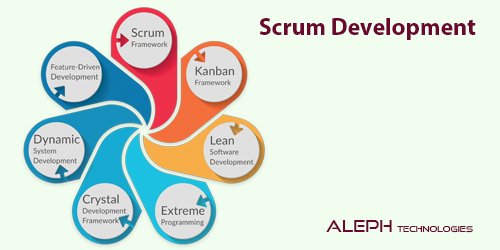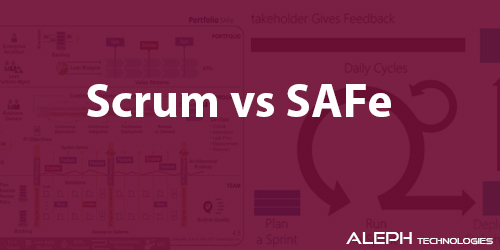Unlocking the Advantages of the Scrum Framework
Mar 17, 2024
Aleph Technologies
5 minutes read
0 comments
850 views
The Scrum Guide 2017 defines Scrum as a framework that enables individuals to address complex adaptive problems, delivering high-value results efficiently and creatively. Co-created by Ken Schwaber and Jeff Sutherland, The Scrum Guide provides a clear and concise explanation of Scrum's roles, events, artifacts, and the principles that bind them together. 📚
SAFE Framework
Agile
Agile Product Management
Scrum Master
Agile
Scrum Alliance
Scrum Essentials:
- Lightweight
- Easy to understand
- Challenging to master🏋️♂️🎓
Scrum Glossary:
The Scrum Glossary offers an overview of Scrum-related terms, some of which are not mandatory but commonly used in Scrum practices. To delve deeper into Scrum concepts and understand their interconnection, we recommend referring to The Scrum Guide. For software development teams using Scrum and agile methods, the Professional Scrum Developer glossary is a valuable resource. 📖
Understanding the Scrum Framework:
Scrum is not a complex methodology but a simple framework designed for effective team collaboration on complex products. It embraces the empirical approach, replacing rigid algorithms with heuristic methods that emphasize people and self-organization to manage complexity and tackle intricate problems. The graphic below illustrates Scrum in action, guiding us from planning to software delivery. 🌐
Advantages of Scrum:
- Better Quality
- Visible Progress
- Reduced Risk
- Enhanced Collaboration and Accountability
- Improved Team Morale
- Self-organizing Teams
- Increased Customer Satisfaction
- Enhanced Return on Investment (ROI)💡💪📈
Disadvantages of Scrum:
- Works best with small teams
- Lack of commitment can lead to project failure
- Daily meetings may frustrate team members🚫🤔🕰️
Key Benefits of Using Scrum:
1. Customer Satisfaction:
Scrum's iterative approach ensures frequent delivery of results, enabling rapid feedback from customers. This leads to delighted customers as their needs are addressed promptly and effectively. 🎉
2. Lower Production Costs:
By valuing task complexity through story pointing, Scrum helps in estimating production costs accurately. This results in cost reduction as projects are organized based on their complexity, optimizing resource allocation. 💰
3. Enhanced Collaboration and Communication:
Scrum's emphasis on collaboration and daily communication fosters a productive and cohesive team environment. Increased visibility and progress tracking lead to better resource utilization and project outcomes. 🤝
Conclusion:
With over 200,000 members in the Scrum community, access to resources, forums, and insights from Professional Scrum Trainers (PSTs), learning and implementing Scrum has never been easier. Embrace the advantages of the Scrum framework to drive successful, collaborative, and efficient project outcomes. 🚀
Add Your Comment
Related posts
-

Scrum Development: A Comprehensive Overview 🚀
Mar 25, 2024 -

Understanding Scaled Agile (SAFe) and Disciplined Agile Delivery (DAD)
Mar 25, 2024 -

Scrum vs SAFe: Unveiling the Differences 🔄
Mar 25, 2024 -

Why Release Management Matters in Agile Projects 🚀
Mar 25, 2024

Please login to check comments